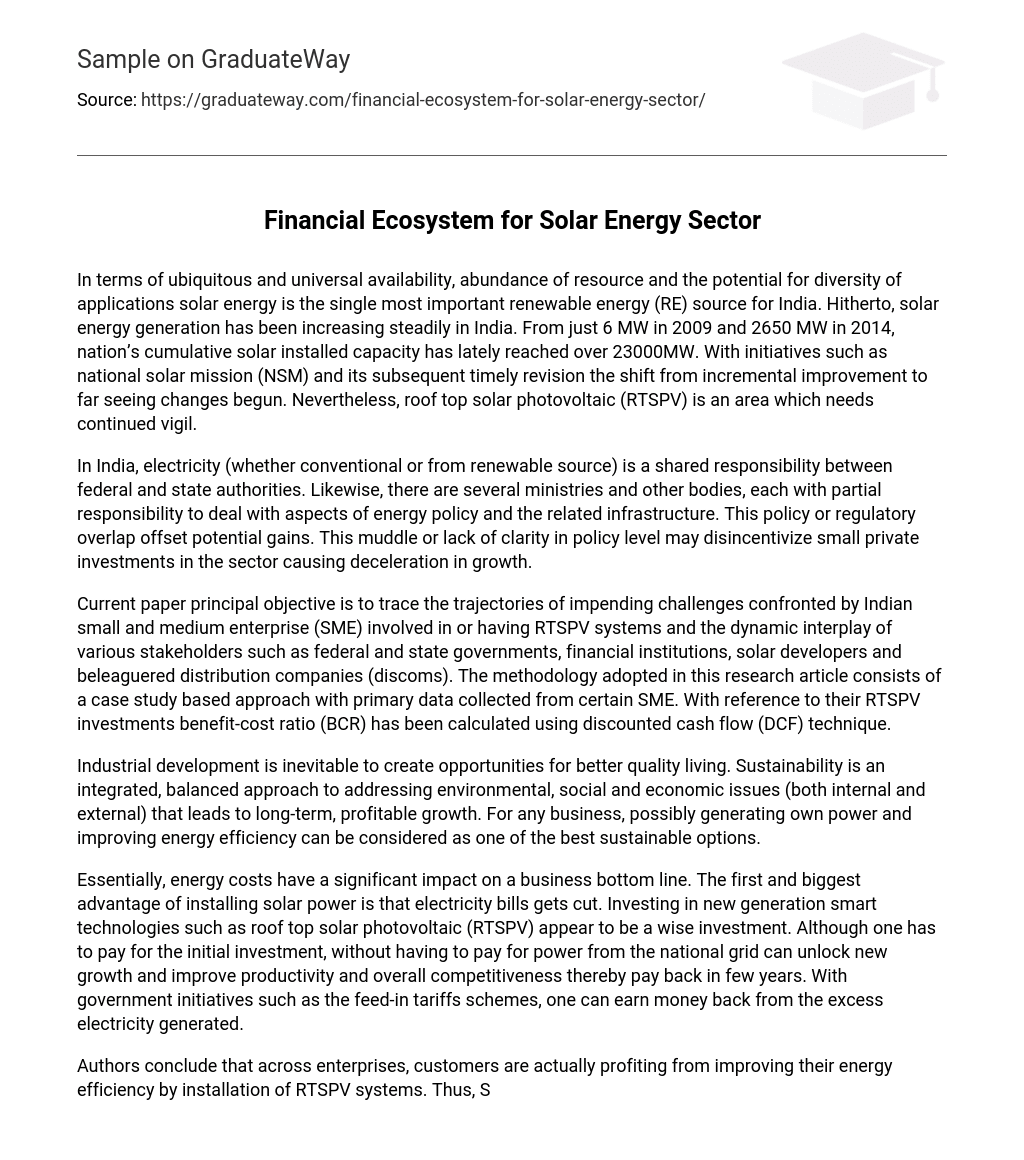In terms of ubiquitous and universal availability, abundance of resource and the potential for diversity of applications solar energy is the single most important renewable energy (RE) source for India. Hitherto, solar energy generation has been increasing steadily in India. From just 6 MW in 2009 and 2650 MW in 2014, nation’s cumulative solar installed capacity has lately reached over 23000MW. With initiatives such as national solar mission (NSM) and its subsequent timely revision the shift from incremental improvement to far seeing changes begun. Nevertheless, roof top solar photovoltaic (RTSPV) is an area which needs continued vigil.
In India, electricity (whether conventional or from renewable source) is a shared responsibility between federal and state authorities. Likewise, there are several ministries and other bodies, each with partial responsibility to deal with aspects of energy policy and the related infrastructure. This policy or regulatory overlap offset potential gains. This muddle or lack of clarity in policy level may disincentivize small private investments in the sector causing deceleration in growth.
Current paper principal objective is to trace the trajectories of impending challenges confronted by Indian small and medium enterprise (SME) involved in or having RTSPV systems and the dynamic interplay of various stakeholders such as federal and state governments, financial institutions, solar developers and beleaguered distribution companies (discoms). The methodology adopted in this research article consists of a case study based approach with primary data collected from certain SME. With reference to their RTSPV investments benefit-cost ratio (BCR) has been calculated using discounted cash flow (DCF) technique.
Industrial development is inevitable to create opportunities for better quality living. Sustainability is an integrated, balanced approach to addressing environmental, social and economic issues (both internal and external) that leads to long-term, profitable growth. For any business, possibly generating own power and improving energy efficiency can be considered as one of the best sustainable options.
Essentially, energy costs have a significant impact on a business bottom line. The first and biggest advantage of installing solar power is that electricity bills gets cut. Investing in new generation smart technologies such as roof top solar photovoltaic (RTSPV) appear to be a wise investment. Although one has to pay for the initial investment, without having to pay for power from the national grid can unlock new growth and improve productivity and overall competitiveness thereby pay back in few years. With government initiatives such as the feed-in tariffs schemes, one can earn money back from the excess electricity generated.
Authors conclude that across enterprises, customers are actually profiting from improving their energy efficiency by installation of RTSPV systems. Thus, SME’s can minimize the downside and maximize the upside, especially with reference to electricity expenses. The findings are that existing and emerging challenges to the contemporary RTSPV sector and its key participants, especially SME’s deserve serious attention.
Creation of a financial ecosystem for solar energy sector will raise both output and productivity and thus profitability. Prompt action in a concerted, purposeful and proactive manner is needed on this front. A long-term solution to deal with changes in the structure of financial policies catalysed by technological advancement needs to be conceived. Government should be pre-emptive and ensure that the envisaged solar policy is not mired in surmises and that concomitant opportunities do not fall victim to it.





